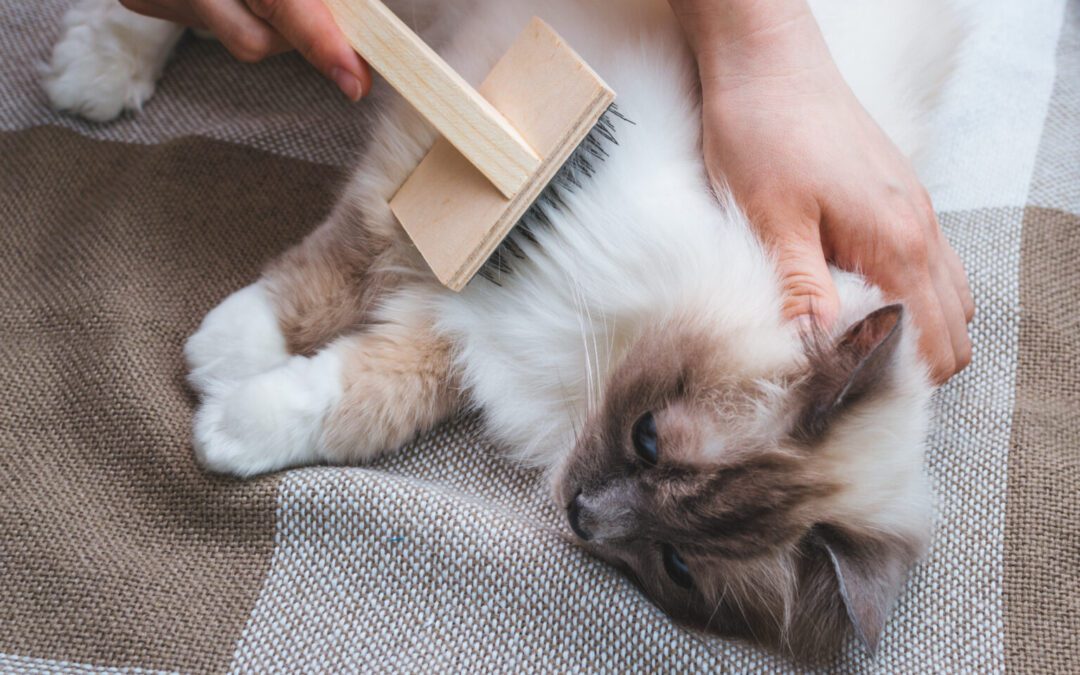Whether it collects in the corners, gets all over your clothes, or shows up in an elongated regurgitated “ball”, cat hair just comes with the territory of feline cohabitation. A gleaming coat is one of their finer physical attributes, but let’s face it, cats shed. Loose, dead hair is set free 1-2 times a year, usually becoming airborne at some point only to settle in places you’d least expect it.
Yes, cat lovers must be willing to put up with loose hairs around the house. But is it always part of a normal process, or could excessive shedding be explained by something else?
Feel Good, Look Great
Cats spend inordinate amounts of time tidying themselves. When they aren’t eating, sleeping, or playing, cats are typically self-grooming or cleaning up fellow felines. It’s a perfectionist strategy and one that originally helped them stay off the radar of vicious predators.
Something that cat owners learn pretty early on is that brushing out their cat’s fur coat on a regular basis helps keep things cleaner around the house. Equally important, this mutually beneficial activity reduces the frequency of hairballs.
Did you know that we offer cat grooming services? We can address any possible issues related to their skin or coat, trim nails, and give them stylish cuts. Our feline friends always leave happy and looking fine!
Cats Shed All the Time!
Cats shed every day, but will only go through large-scale sheds once or twice a year. Depending on breed and environment (among other factors), cats normally lose and regrow their millions of hairs on a routine basis.
Not all cats shed a heavy winter undercoat during the spring or lose dry hair in the fall to make room for a heavier winter coat. Indoor-only cats may have a steady shed year-round. Each cat has a unique shedding pattern.
Save Your Sanity
Regular brushing can help reduce the amount of fur your cat sheds. They might not immediately thank you for this, but bathing them can also help the coat and skin during a heavier shed. Likewise, adding certain ingredients or supplements to your pet’s diet can add luster and shine to a drab or dry coat.
When Shedding Is Symptomatic
It’s true that cats shed as a normal process, but too much hair loss can be indicative of larger issues, such as:
External parasites, such as fleas
Stress or anxiety
Allergies
Skin inflammation or irritation
Ringworm
We recommend making notes about your cat’s fur quality, texture, appearance, and how their skin feels. If you see bald spots or hotspots, it’s time to get to the bottom of these symptoms. Also, if you notice that your cat is experiencing more hairballs than normal, please let us know.
Your Cat’s Coat
In general, if your cat’s coat is shiny, thick, clean or debris, tangles or mats, and doesn’t have a dry or brittle appearance, their health is likely in great shape. Even if you notice more hair being dropped on your clothing or furniture, it could be that they are simply undergoing a routine shed.
If you have questions about your cat’s health, behavior, and appearance, please contact us. Cat Care of Vinings is always here for your cat!

